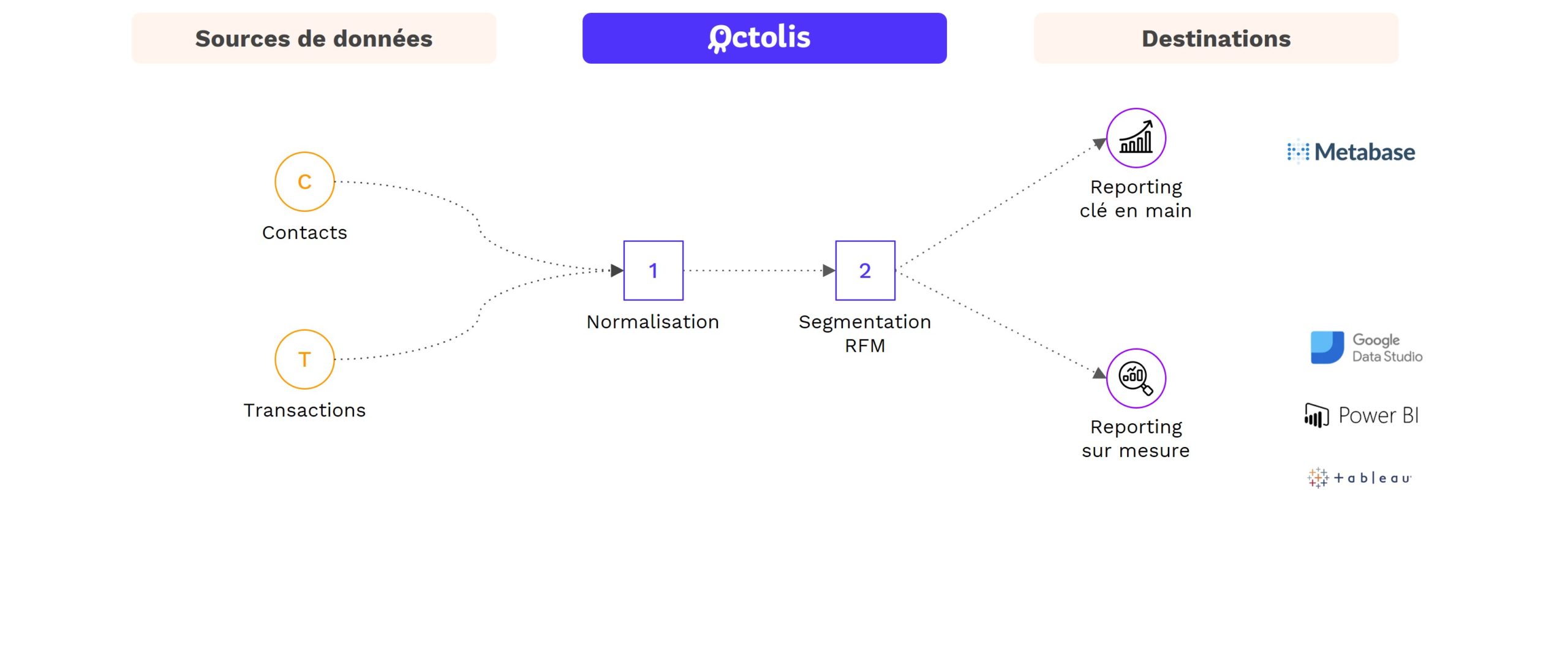RFM segmentation is a great tool for analyzing the behavior of your customers, and implementing relevant actions for each segment.
Thanks to Octolis, you will be able to set up an RFM segmentation in a few minutes.
You can analyze performance according to each segment, and of course have RFM segmentation in your marketing / CRM tools to personalize your communications.
How RFM segmentation works
RFM segmentation classifies customers according to their individual buying behavior.
Each contact is scored based on 3 criteria:
- R = Recency of last purchase.
- F = Frequency of purchases.
- M = Cumulative amount of purchases.
For each criterion, the contact has a relative score ranging from 1 (low) to 6 (high).
For example, if a contact has R = 1, it means that he or she is part of the 1/6 of the database of customers with the oldest last purchase date.
Next, we combine the F and M ratings into “FxM” to get a two-dimensional rating on which segments are based.
For example, we can define the segment “Best customers become passive” with R IN {1,2} and FxM IN {5,6}.
In theory, with a 2-dimensional scoring, having 6 potential values each, you can build up to 6 x 6 = 36 segments. But in general, there is no point in having more than 10 segments.


